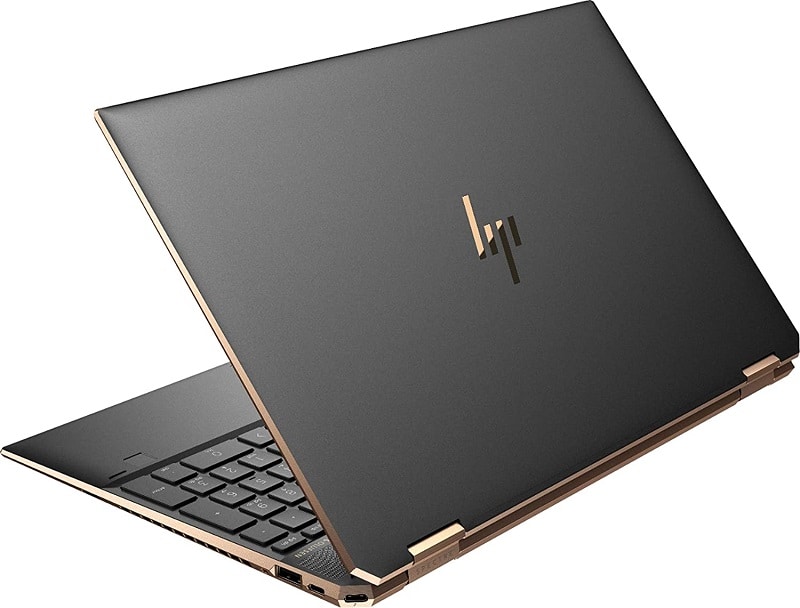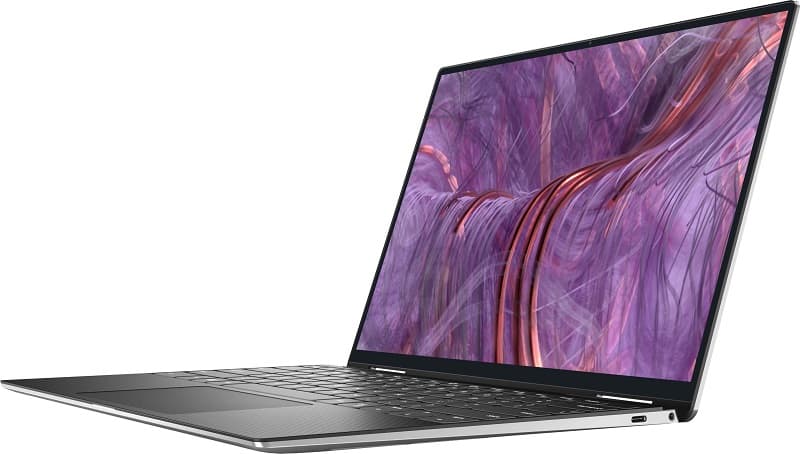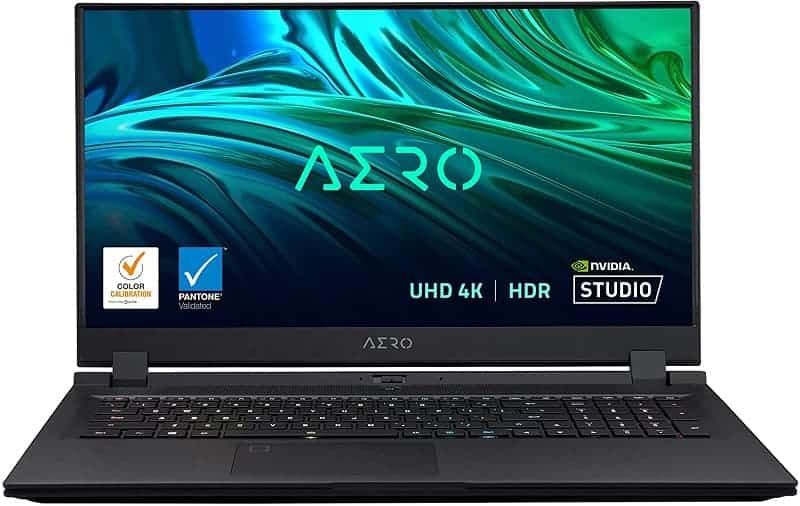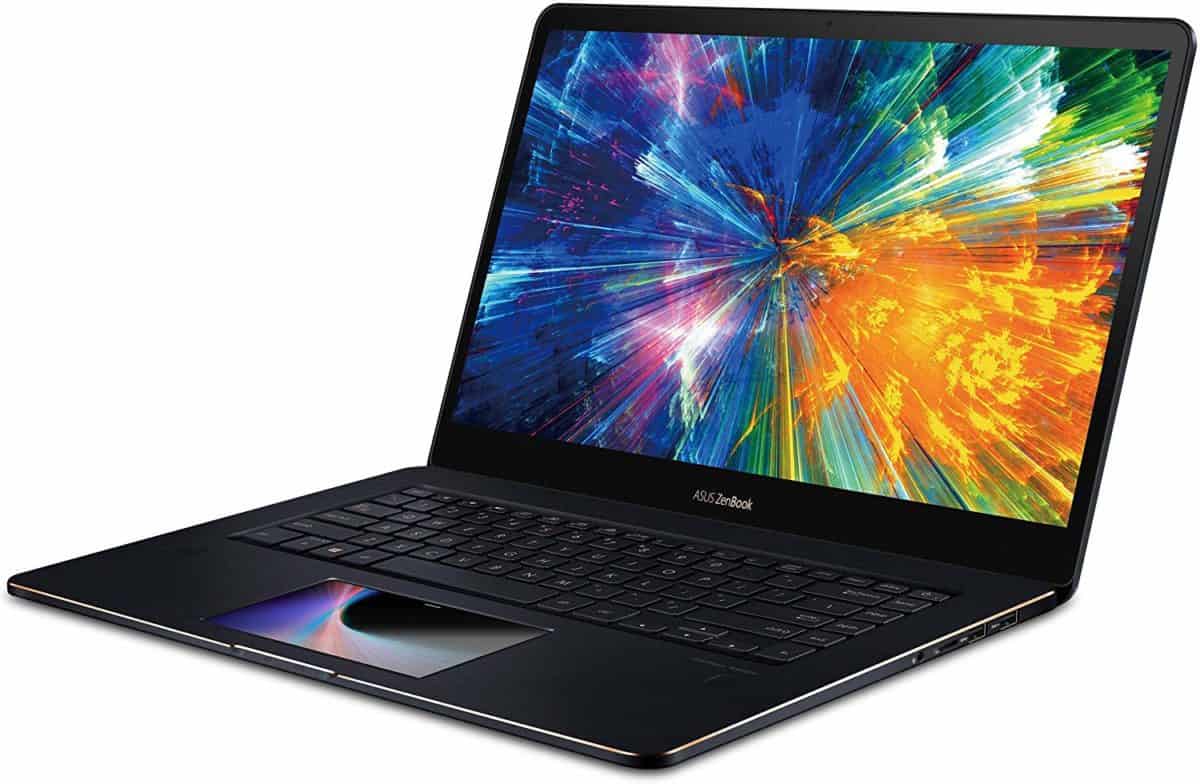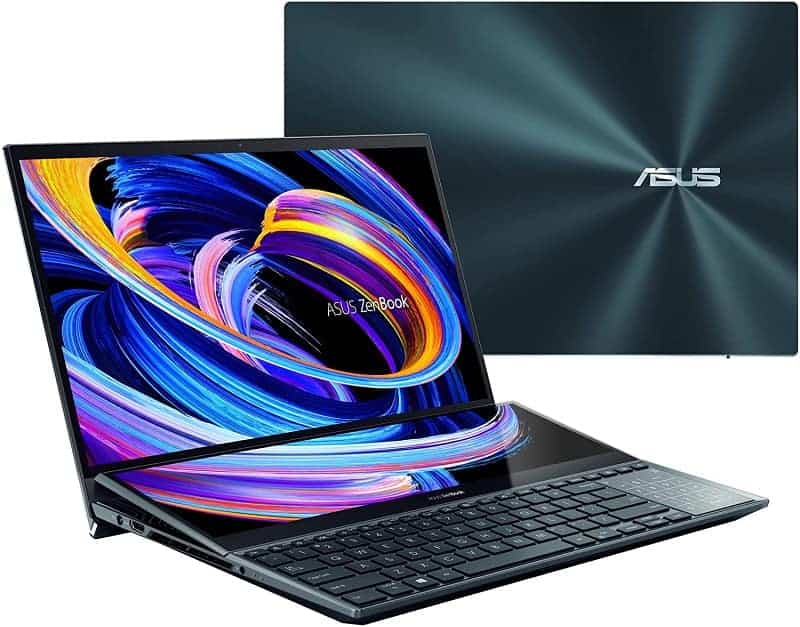OLED laptop buyer’s guide
Best OLED laptops 2022
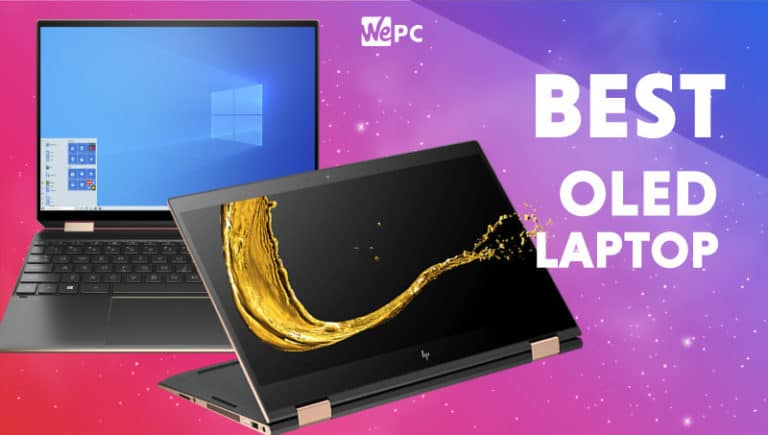
An OLED laptop offers next-level image quality on your device’s display. The screens of these laptops are all lush, colorful, and have a great contrast ratio; usually also having a much higher peak brightness than you will find in a conventional IPS/TN/VA display. Having said that, some OLED screens are better than others, not to mention the quality of the laptop they are attached to besides this, so read below for our breakdown of the best OLED laptops on the market.
Memorial Day laptop deals are live! Get huge savings on gaming laptops on Best Buy or HP in 2022, on the likes of the Lenovo Legion Slim 7, HP Omen 16, and Acer Nitro 5 gaming laptops.
Should I buy an OLED laptop?
If you are a creative who wants a laptop with a wide color gamut that they can do color-accurate work on (be it photo editing, graphic design, color grading of video footage etc.), then an OLED laptop would be an ideal choice. Equally if you’re just looking for a laptop with a display that really pops for watching films on, then the OLED could be right for you. Those looking for a gaming laptop however should probably look elsewhere, unless your interest is solely in slow-paced titles or strategy games, as currently, the maximum refresh rate on an OLED laptop is 60Hz.
Read our Things to consider when buying an OLED laptop section below for more information.
Our Top Picks

The Best OLED laptop 2022
In-depth Review


HP Spectre x360 14 OLED

HP Spectre x360 14 OLED
The HP Spectre x360 14 equipped with OLED 3000 x 2000 display is not a cheap laptop, but it is definitely a quality piece of technology, and the best all-round 2-in-1 laptop out at the moment. For those who don’t know, 2-in-1 laptops combine the form factor of a laptop with an ability to fold backward into a tablet-like device, and the Spectre x360 with its touch screen makes a great flexible machine for creatives on the move. The 3K2K OLED display has superb contrast, a fairly high peak brightness of around 340 nits, and a superb color gamut, covering well over 100% sRGB and 100% DCI-P3, making it ideal for any sort of color accurate workflow.
The OLED version is powered by up to an Intel Core i7-1195G7 CPU with either Intel Iris Xe onboard graphics or the more powerful Nvidia GeForce MX450 (2GB). You won’t be able to do much in the way of gaming on this machine, but combined with 16GB of RAM then this will definitely do well for light workstation use.
Although looks are subjective, most people would agree this is a nice-looking laptop. We think the metallic detailing around the edges and joints and the thin bezels around the screen give the machine a quality aesthetic. In terms of build quality, the Spectre x360 is the best 2-in-1 device you will find, with the hinge joint in particular (often a weak point on cheaper models) feeling sturdy, which is exactly what you’d want. Most of the machine is made from aluminium, meaning the chassis feels robust with little flex, though it remains not too heavy despite this.
The keyboard of the HP Spectre x360 14 is particularly good for such a thin machine: it uses scissor switches and has 1.5mm key travel, and is the best typing experience you will get from a 2-in-1 laptop, with nice tactile responsiveness as well as nicely sized and arranged keys. The trackpad is also of good quality, and features a fingerprint scanner for added security.
The port coverage of the HP Spectre x360 14 is also good despite its slimline design, with two USB-C ports that support Thunderbolt 4 and DisplayPort 1.4, a USB-A port, and a microSD card reader in addition to the usual headphone/mic jack. A nice selection for any content creator needs. The included stylus pen is of decent quality, has two programmable buttons, and is rechargeable via USB-C.
The speakers are solid (for a laptop), with respectable bass replication and sound quality, though not quite up there with the MacBook’s. The webcam is unfortunately not the best, and its image quality (not terrible but not great) is one of the few criticisms we can level at this machine, though it does at least have InfraRed functionality supporting Windows Hello.
Although the 14 in the name would indicate a 14-inch laptop, the actual diagonal screen size of the HP Spectre x360 is 13.5-inches (technically the same if you’re rounding up but still, a bit sly from HP).
Compared to the Galaxy Pro 360 it has better build quality, and more high-end upgrade options for its core components, though the Galaxy’s touchpad is larger. Compared to the Dell XPS 13 2-in-1 it has superior port coverage, better colors, and a slightly better keyboard. Ultimately though, any one of these three machines are great choices for a high-end 2-in-1 machine.

Dell XPS 15 (15-inch, OLED) 2021

Dell XPS 15 (15-inch, OLED) 2021
The Dell XPS 15 is a major challenger of the Apple MacBook Air’s throne for the best high-quality ultraportable notebook laptop, with the traditional clamshell design and one of the nicest looking aesthetics of any laptop out there. It isn’t designed to be a gaming machine, but a premium general use and light workstation laptop, for office workers, writers, and creatives who don’t need a lot of rendering power in their workflows. That being said, the Intel Core i7-11800H or i9-11900H CPU options are both fairly powerful, and the RTX 3050 Ti graphics card, whilst substantially weaker than its older RTX 3060 sibling, is still a dedicated graphics card capable of light gaming and rendering workloads.
The 3456 x 2160 (a.k.a 3.5K) screen has a 16:10 aspect ratio, which gives you a bit of extra headroom and vertical space on the page when reading documents, web browsing, or editing an image. Bezels are also pleasingly thin, maximizing the screen space you do have. The display itself is sublime, covering 100% of both the sRGB and 100% DCI-P3 spectrum, with a sensational 100,000:1 contrast ratio and the brightest screen on this page at 500nits on max settings. This makes the Dell XPS 15 a great choice for photographers, video editors, graphic designers, and others involved in color-accurate work.
Build quality on this machine is top-notch, and it’s genuinely impressive how sturdy the Dell XPS 15 feels despite being so thin. The membrane keyboard is a pleasure to type on, even if it doesn’t quite match up to the HP Spectre x360 with its superior travel distance, and the trackpad is also pleasingly responsive and accurate. Fan noise is also kept to a minimum, making this the ideal working laptop when on public transport or a quiet study area. The microSD card reader it comes with is another welcome feature, particularly one that runs as fast and efficiently as this one. The speakers are respectable, but not as good as those of the HP Spectre x360.
Battery life on the OLED version of the Dell XPS 15 lasts for 7-8 hours, which is decent for this kind of display, and with a CPU and GPU of this power, if not the best out there. The 1080p webcam does have InfraRed technology but is merely adequate in terms of quality, along with the internal mic.
Besides these points though, the only real downside of this OLED laptop is the price, which can be brought down a bit if you opt for the less powerful CPU, less RAM, and a smaller SSD size, but we’re still talking a significant price tag. Still compared to the MacBook it doesn’t seem so unreasonable, and you do get one of the nicest designed laptops on the market.
Gigabyte Aero 17 YD (HDR, 60Hz, RTX 3080)
Gigabyte Aero 17 YD (HDR, 60Hz, RTX 3080)
Straight away we should point out that the Gigabyte Aero 15 4K stretches our definition of ‘gaming laptop’ somewhat in that it only has a 60Hz refresh rate display, which effectively caps any game you play to 60FPS. At this present time though, this is the best you can hope for with an OLED/AMOLED screen, and the Gigabyte Aero does at least comes with options for powerful enough components that you’ll be able to consistently reach the 60FPS mark in games on the higher settings (assuming you set your in-game resolution to 1080p that is).
The maximum specs top out at the Intel Core i9-11980HK and Nvidia GeForce RTX 3080 graphics card. Although the TGP of the RTX 3080 is relatively low compared to some of our favorite gaming laptop picks, it’s still a powerful graphics card at the end of the day. You can spec out the RAM up to 32GB of DDR4 and have up to a 1.5 TB SSD, though you can also upgrade this further yourself.
Besides the refresh rate, the 4K AMOLED display on this machine is absolutely fantastic with 100% sRGB and DCI-P3 gamut coverage, and a Delta score of less than 1, making it very color-accurate and a superb choice for anyone looking to do a color-based workflow. Both the contrast and peak brightness on the screen are superb, and it comes with HDR support, specifically DisplayHDR 400 certification.
The more recent versions of the Aero 15 come with Thunderbolt support and there is a good range of ports besides this, including a UHS-II SD card reader. The full-sized keyboard is of a respectable standard, as is the trackpad, and the latter comes with a fingerprint reader.
In terms of the drawbacks, the 720p webcam is placed in that irritating under the chin position that some laptop makers continue to use. Fan noise is also unfortunately loud at times, even on battery saver mode, though on the plus side the laptop does run relatively cool considering its powerful components. The laptop lacks G-Sync support, making the occasional bit of screen tearing more likely in games. Whilst of generally okay build quality, it’s not as nice looking as the other selections on this list, and is certainly on the thicker and heavier side, making it not the most portable.
Everything considered, this is a great laptop for creatives who want to do some gaming on the side.

ASUS ZenBook 13 (OLED, AMD)

ASUS ZenBook 13 (OLED, AMD)
The Asus ZenBook 13 (UM325) is not only the most affordable OLED laptop on this list, it also has one of the best battery life durations, and a pretty powerful (for a non-gaming notebook) AMD Ryzen 7 5800U CPU, which has comparable performance to Intel’s Core i7-1185G7.
The AMD CPU means that the battery life of the ZenBook 13 stretches to about 10-11 hours of general usage on 50% brightness, which is an impressive result for an OLED laptop. It can be equipped with up to 1TB SSD and 16GB of RAM.
The display has the classic 16:9 1920 x 1080 resolution, which is good for watching Netflix on. It has a great 7400:1 contrast ratio, a solid peak brightness of 370 nits, and the color gamut is also superb at 100% sRGB and DCI-P3, and near enough that at 99% Adobe RGB – definitely good enough for color-based creative work in these color spaces, particularly as it also shows good color accuracy.
At 2.5lb / 1.13kg the ZenBook 13 is lighter even than the 2.8lb MacBook Air. Dimensions-wise it’s comparable to the Dell XPS 13 and is overall an extremely portable machine. The build quality is not quite up there with these machines, as you’d expect given the lower price tag, with more of a plasticky feel, but it’s not bad either. The keyboard is of a decent size and is okay to use, though the keypresses do feel a bit on the mushy side compared to the more clicky and responsive premium options on this list. The trackpad is similarly fairly middle of the road, though it can be turned into a digital numpad should you wish. Speakers on this laptop are actually above average, certainly better than those on your classic ‘gaming laptop’, if not up there with the MacBook Pro et al. There is some level of bass replication and sound quality is good, though they could be a bit louder.
The biggest criticism we can level at this ASUS laptop is the lack of a headphone jack, meaning you need to use a headphone with USB-C support (or an adapter at least). The second biggest critique is of the 720p webcam, which has pretty dire image quality – not the best for conference calls. Still, besides these points, there’s not too much negative to say about this great value OLED laptop.

ASUS ZenBook Pro Duo 15 (OLED)

ASUS ZenBook Pro Duo 15 (OLED)
The Asus ZenBook Pro Duo 15 has many superb quality features and has the potential to be a great OLED laptop, though falls slightly short due to a couple of questionable design choices. It’s still definitely worth considering though if these aspects don’t put your off.
Starting with the positives, the 2021 version of the machine comes with a powerful CPU & CPU combo in the way of the Intel Core i9-10980HK processor and the Nvidia RTX 3070 graphics card. The RTX 3070 has a max TGP of 110W with Dynamic Boost, which is up there with most gaming laptops that pack the same GPU. Although, as with all OLED screens, you will be capped at an effective 60FPS by the 60Hz display, you can definitely game on this machine as long as you turn the in-game resolution down to 1080p.
An Intel 12th gen version of the same laptop will be released in 2022, which comes with options for either an Intel Core i7-12700H or i9-12900H processor, but seems to be limited to the RTX 3060 GPU for some reason. You also get the option for a 1080p OLED display, should 4K resolution be unnecessary for you and you wish to save some money.
The main OLED display is terrific, with great contrast and 100% color gamut replication across the sRGB, DCI-P3, and Adobe RGB spaces, making it ideal for color-based workflows. The peak brightness is merely adequate rather than stellar, but should be fine for most indoor environments.
The secondary 3840 x 1100 display between the main display and keyboard has touchscreen functionality and is useful for displaying different windows of whatever software you are using if you’re a creator. There is a Control Panel app created by ASUS that can occupy the second screen which can give more streamlined functionality to Adobe Premiere, After Effects, Photoshop, and Lightroom Classic.
Onto the negatives: whilst the lack of an SD card wouldn’t necessarily be that big of a deal for other laptops, the Asus ZenBook Pro Duo 15 is designed specifically with creatives in mind, so its absence here is fairly irritating. The fans on this laptop also get very loud when its put under any sort of strain: not ideal if you’re using this thing in an office space. The keyboard with a trackpad placed to the right-hand side (to make space for the second screen) can be a bit awkward to use, and we’d recommend using a mouse. Finally, the battery life is pretty poor: you’ll get not more than 4 hours of general usage at 50% brightness (assuming both screens are on), which really just isn’t good enough for working on the move.
Still, if these critiques don’t put you off, and you can afford the steep asking price, there is still much to like in this quality dual-screen workstation machine.
Final Word
This has been our OLED laptop buyer’s guide, we hope it has helped you find the best OLED laptop for your needs. If it turns out your interest is not limited to OLED laptops, then do have a look at our other laptop guides for more options. Alternatively, see our best gaming laptop page if gaming is your main focus.


